





Amines constitute an important class of organic compounds derived by replacing one or more hydrogen atoms ofNH 3 molecule by alkyl/aryl group(s).

In the IUPAC system, the amines are regarded as alkanamines, e.g.,

Structure
The nitrogen atom in amine is spa-hybridised. The three hybrid orbitals are involved in bond formation and one hybrid atomic orbital contains the lone pair of electrons, giving the pyramidal geometry of amines.
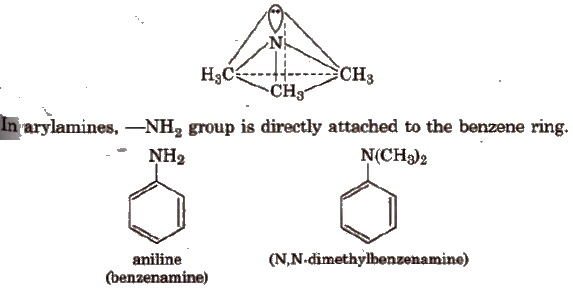
Methods of Preparation of Amines
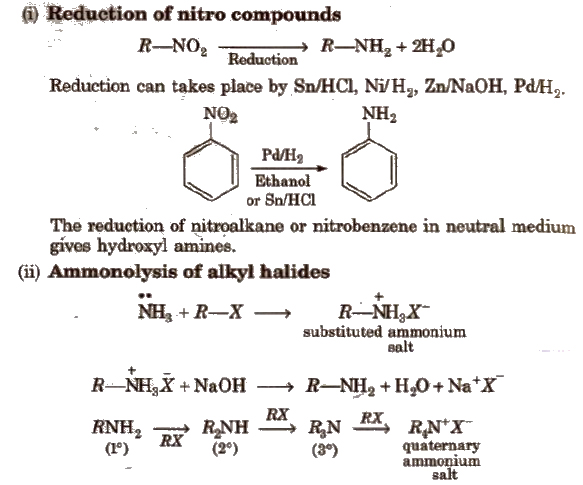
Ammonolysis has the disadvantage of yielding a mixture of primary, secondary and tertiary amines and also a quaternary ammonium salt.
However, primary amine is obtained as a major product by taking large excess of NH3.
Order of reactivity of halides ‘with amines is RI > RBr > RCI.
Aromatic amines could not be prepared since aryl halides are much less reactive towards nucleophilic substitution reactions.
(iii) Reduction of nitriles or cyanides

(v) Reduction of amides
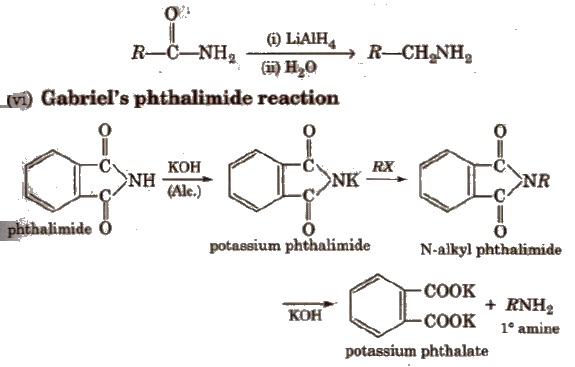
It only produces 1 0 amines. This method is not suitable for 1° arylamine because aryl halide does not give nucleophilic substitution reaction.
(viii) Hofmann bromamide degradation reaction

In Hofmann degradation reaction, the amine formed has one carbon less than the parent amide. To obtain primary amine with same number of carbon atoms from primary amide, reduction is done with LiAlH4/ether.
Physical Properties of Amines
Basic Strength of Amines
Amines act as Lewis bases due to the presence of lone pair of electrons on the nitrogen atom.
More the Kb (dissociation constant of base), higher is the basicity of amines.
Lesser the pKb‘ higher is the basicity of amines.
Aliphatic amines (CH3NH2) are stronger bases than NH3 due to the electron releasing +/ effect of the alkyl group.
Among aliphatic methyl amines, the order of basic strength in aqueous solution is as follows
(C2H5NH > (C2H5)3N > C2H5NH2 > NH3
(CH3)2NH > CH3NH2 > (CH3)3N > NH3
Aromatic amines are weaker basesthan aliphatic amlnes and NH3,due to the fact that the electron pair on the nitrogen atom is involved in resonance with the π-electron pairs of the ring.
Electron releasing groups (e.g.,-CH3,-OCH3,-NH2 etc.) increase the basic strength of aromatic amines while electron withdrawing groups (like – NO2, -X,-CN etc.) tend to decrease the same.
o-substituted aromaticamines are usually weaker basesthan aniline irrespective of the nature of substituent whether electron releasing or electron withdrawing. This is called ortho effect and is probably due to sterk and electronic factors.
chemical Properties of Amines
(i) Alkylation All the three types of amines react with alkyl halides to form quaternary ammonium salt as the final product provided alkyl halide is present in excess.

Aromatic amines also undergo alkylation as given below.
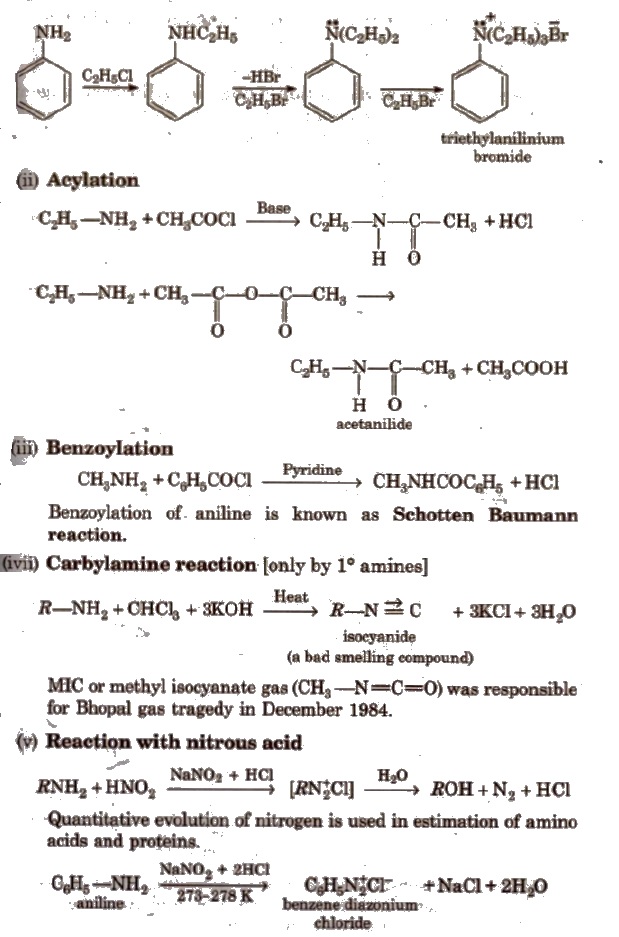
But secondary and _tertiary amines react with nitrous acid in different manner.
Methyl amine give dimethyl ether with HNO2.
(vi) Reaction with aryl sulphonyl chloride [Hinsberg reagent] The reaction of benzenesulphonyl chloride with primary amine yield N-ethyl benzenesulphonyl amide.
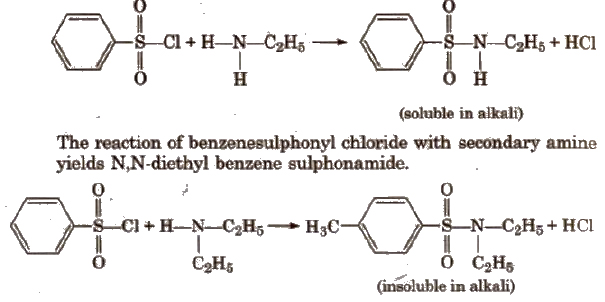
Tertiary amines does not react with benzenesulphonyl chloride.
(vii) Reaction with aldehydes Schiff base is obtained.

(viii) Electrophihc substitution reactions Aniline is ortho and para directing towards electrophilic substitution reaction due to high electron density at ortho and para-positions.
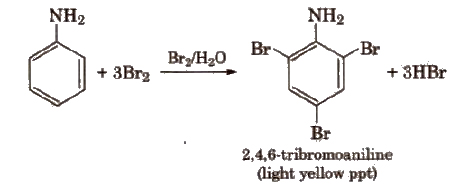
To prepare monosubstituted derivative, activating effect of -NH2 group must be controlled. It can be done by protecting the -NH2 group by acetylation with acetic anhydride.

(b) Nitration Direct nitration of aniline is not possible as it is susceptible to oxidation, thus amino group is first protected by acetylation.
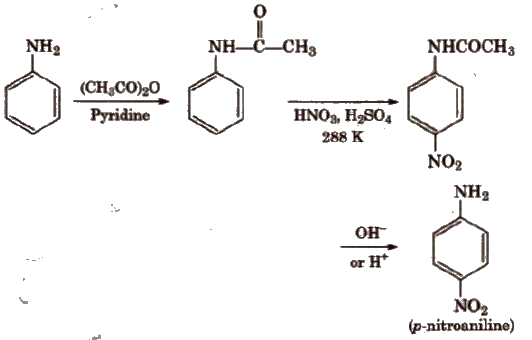
In strongly acidic medium, aniline is protonated as anilinium ion which is meta directing so it gives meta product also.
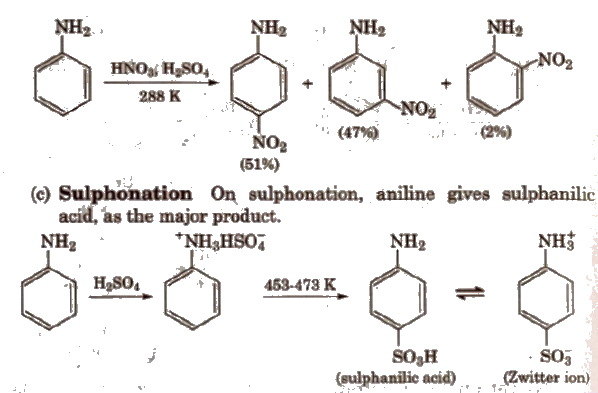
(d) Aniline does not undergo Friedel-Crafts reaction due to salt formation with aluminium chloride, the Lewis acid, which is used as a catalyst. Due to this, nitrogen of aniline acquires positive charge and hence. behave like a strong deactivating group for further chemical reaction.
(ix) Oxidation Use of diffrent oxidising agents gives difTerent products.
e.g.,

Separation of Mixture of Amines (1°, 2° and 3°)
(a) Fractional distillation This method Is based on the boiling points of amines and is used satIsfactorily in Industry.
(b) Hofmann’s methoOd Diethyloxalate is called Hofmann’s reagent with which mixture of amines is treated.
(c) Hlnsberg’s method see.chemkal reactions.
Benzene Diazonium Chloride (C6H5N2+;Cl–)
Preparation (Diazotisation reaction)

The excess acid in diazotisation reaction is necessary to maintain proper acidic medium for the reaction and to prevent combination of diazonium salt formed with the undiazotised amine.
Diazonium salts are prepared and used in aqueous solutions because in solid state, they explode.
Properties
It is a colourless crystalline solid, soluble in water. It has tendency to explode when dry.
Stability of Arenediazonium salts
It is relatively more stable than the alkyldiazonium salt. The arenediazonium ion is resonance stabilised as is indicated by the following resonating structures:
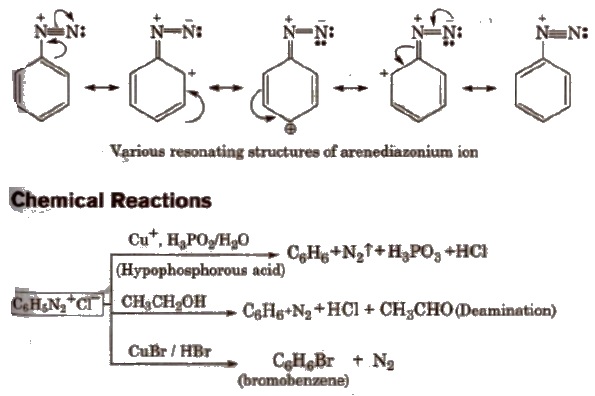
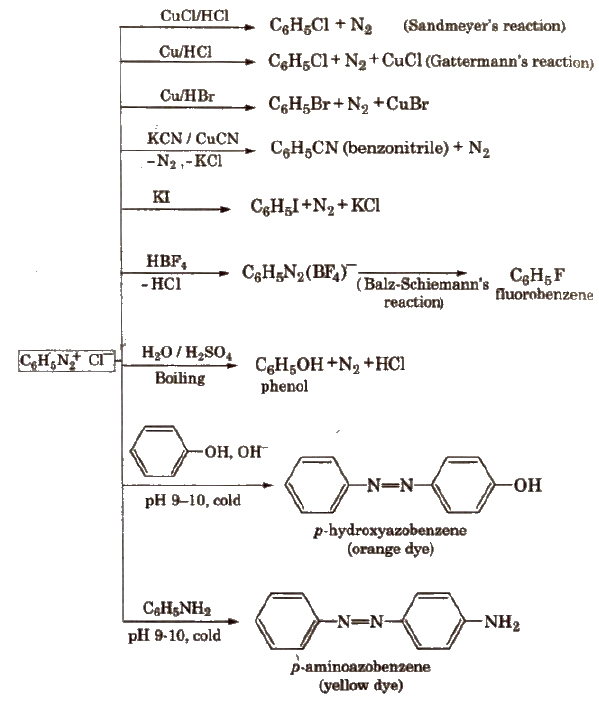
Alkyl Cyanides’
These compound have formula RCN. These are the derivatives of RCN.
According to IUPAC system, cyanides are named as ‘alkane nitrile’, e.g.,

Methods of Preparation
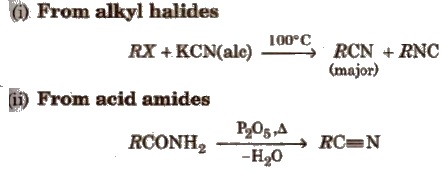
Physical properties
Chemical Properties
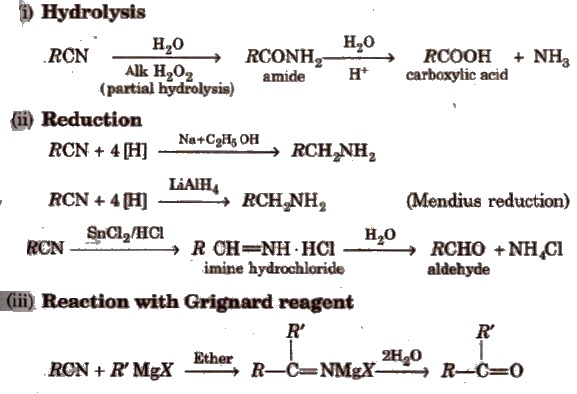
Alkyl iscoyanides (RNC)
Accordinlg to IUPAC system, these are named as ‘alkane isonitrile’
e.g., CH3NC methyl isonitrile
C6H5NC benzene isonitrile
Methods of Preparation
(a) From alkyl halides
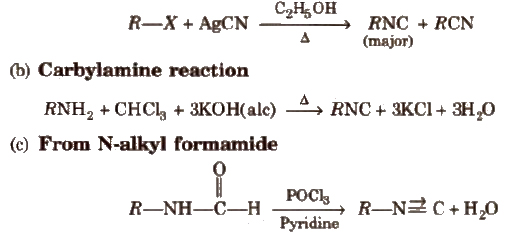
Physical Properties
Chemical Properties
(i) Hydrolysis
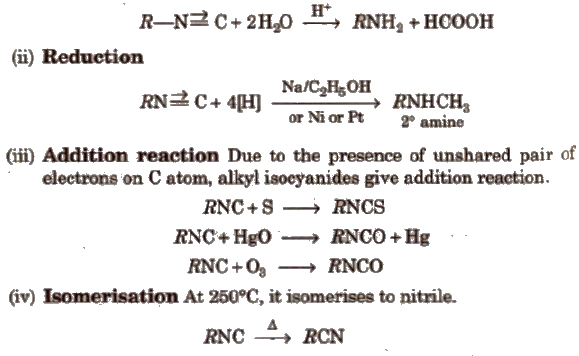
Nitro Compounds
These are obtained by replacing one H of hydrocarbon by -NO2 group.
These are named according to IUPAC system as ‘nitro alkane’.
Methods of Preparation
(i) From alkyl halides
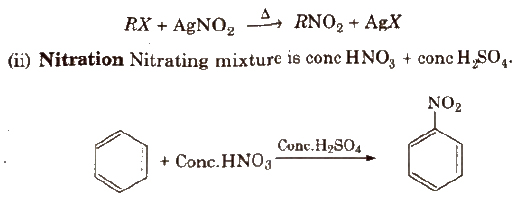
Physical Properties
Chemical Properties
(i) Reduction With Sn/HCl or catalytic hydrogenation, nitroalkanes are reduced to amines.
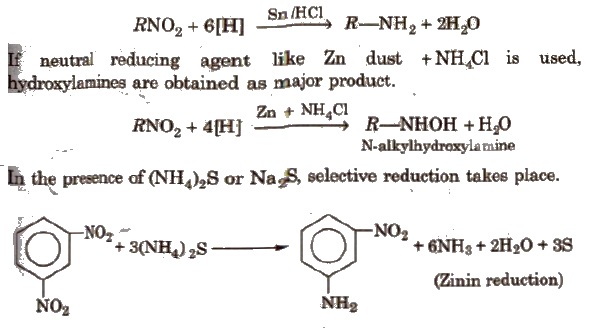
Nitrobenzene gives different prociucts with different reagents and in different mediums.
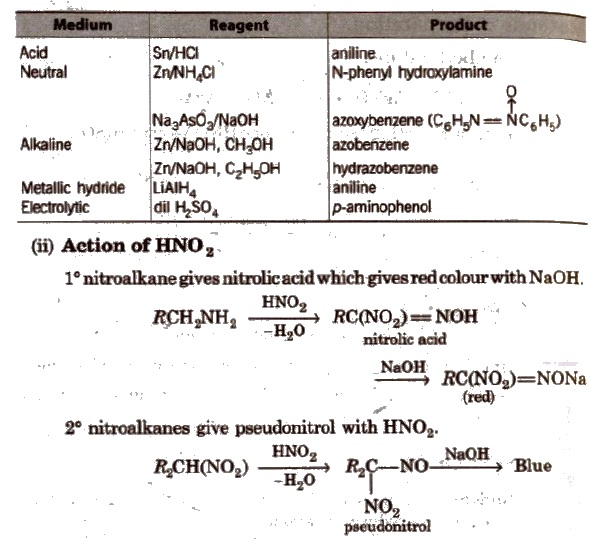
3° nitroalkanes does not react with HNO2
(iii) Nef carbonyl synthesis Na or K salt of 1° or 2° nitroalkanes give carbonyl compounds on acidification with 50% H2SO4 at room temperature. This reaction is called Nef carbonyl synthesis.

(iv) Electrophifie substitution On nitration, nitrobenzene gives m-dinitrobenzene (as -NO2 is a m-directing group and strongly deactivating).

It does not give Friedel-Craft’s alkylation.
(v) Nucleophilic substitution reaction -NO2 group activates the ring towards nucleophilic substitution.
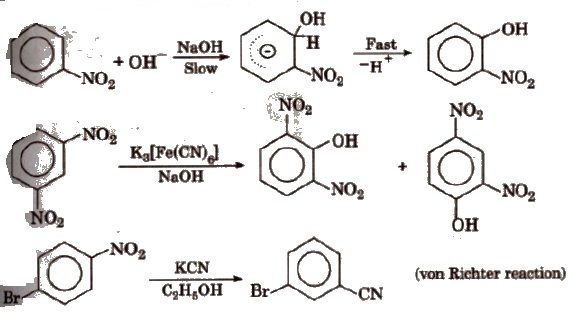
.png)